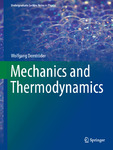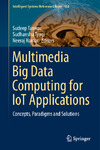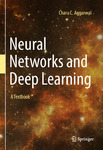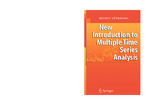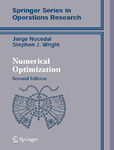Browsing School of Pure & Applied Sciences by Title
Now showing items 117-136 of 196
-
Linear and Nonlinear Programming
(Springer, 2016)This book is intended as a text covering the central concepts of practical optimization techniques. It is designed for either self-study by professionals or classroom work at the undergraduate or graduate level for ... -
Magnetic Interactions in Molecules and Solids
(Springer, 2016)Magnetic interactions are not only fascinating from an academic viewpoint, they also play an increasingly important role in chemistry, especially in the chemistry that is aimed at designing materials with predefined ... -
Mass Spectrometry
(Springer, 2017)When non-mass spectrometrists are talking about mass spectrometry, it rather often sounds as if they were telling a story out of Poe’s Tales of Mystery and Imagination. Indeed, mass spectrometry appears to be regarded ... -
Mathematical Logic
(Springer, 2018)In Why Is There Philosophy of Mathematics at All? [8], Ian Hacking writes: Yet although most members of our species have some capacity for geometrical and numerical concepts, very few human beings have much capacity for ... -
Mathematical Physics
(Springer, 2013)Based on my own experience of teaching from the first edition, and more importantly based on the comments of the adopters and readers, I have made some significant changes to the new edition of the book: Part I is ... -
Mechanics and Thermodynamics
(Springer, 2017)The present textbook represents the first part of a four-volume series on experimental Physics. It covers the field ofMechanics and Thermodynamics. One of its goal is to illustrate, that the explanation of our world and ... -
Methods of Mathematical Modelling
(Springer, 2015)In order to explain the purpose of modelling, it is helpful to start by asking: what is a mathematical model? One answer was given by Rutherford Aris [4]: A model is a set of mathematical equations that … provide an ... -
Modeling Life
(Springer, 2017)This course was designed to supplant the traditional “Calculus for Life Sciences” course generally required for freshman and sophomore life science students. The standard course is limited to calculus in one variable and ... -
Modelling Computing Systems
(Springer, 2013) -
A Modern Introduction to Probability and Statistics
(Springer, 2005)Probability and statistics are fascinating subjects on the interface between mathematics and applied sciences that help us understand and solve practical problems. We believe that you, by learning how stochastic methods ... -
Multimedia Big Data Computing for IoT Applications
(Springer, 2020)With an exponential increase in the provisioning of multimedia devices over the Internet of Things (IoT), a significant amount of multimedia big data has been generated from different devices located across the globe. ... -
Multivariate Calculus and Geometry
(Springer, 2014)The importance assigned to accuracy in basic mathematics courses has, initially, a useful disciplinary purpose but can, unintentionally, hinder progress if it fosters the belief that exactness is all that makes mathematics ... -
Neural Networks and Deep Learning
(Springer, 2018)Neural networks were developed to simulate the human nervous system for machine learning tasks by treating the computational units in a learning model in a manner similar to human neurons. The grand vision of neural ... -
New Introduction to Multiple Time Series Analysis
(Springer, 2005)When I worked on my Introduction to Multiple Time Series Analysis (Lu¨tkepohl (1991)), a suitable textbook for this field was not available. Given the great importance these methods have gained in applied econometric ... -
Numerical Optimization
(Springer, 2006)This is a book for people interested in solving optimization problems. Because of the wide (and growing) use of optimization in science, engineering, economics, and industry, it is essential for students and practitioners ... -
Object-Oriented Analysis, Design and Implementation
(Springer, 2015)The second edition of the book includes revisions based on the feedback received from a number of sources on the first edition. The case-study-based approach to the principles of object-oriented design has been mostly ... -
Ordinary Differential Equations
(Springer, 2012)This text is intended for the introductory three- or four-hour one-semester sophomore level differential equations course traditionally taken by students majoring in science or engineering. The prerequisite is the standard ... -
Partial Differential Equations
(Springer, 2013)This is the third edition of my textbook intended for students who wish to obtain an introduction to the theory of partial differential equations (PDEs, for short). Why is there a new edition? The answer is simple: I ... -
Particles and Nuclei
(Springer, 2015)Since the first German edition of this textbook in 1993, many extensions and corrections of the text have been added in every further edition. For the present seventh English edition, the text of several chapters and ... -
Perceptual Organization
(Springer, 2019)The goal here is to describe some of the processes underlying how the auditory, tactual and visual modalities and their combinations convert sensory inputs into two- and three-dimensional objects. Those processes are a ...






